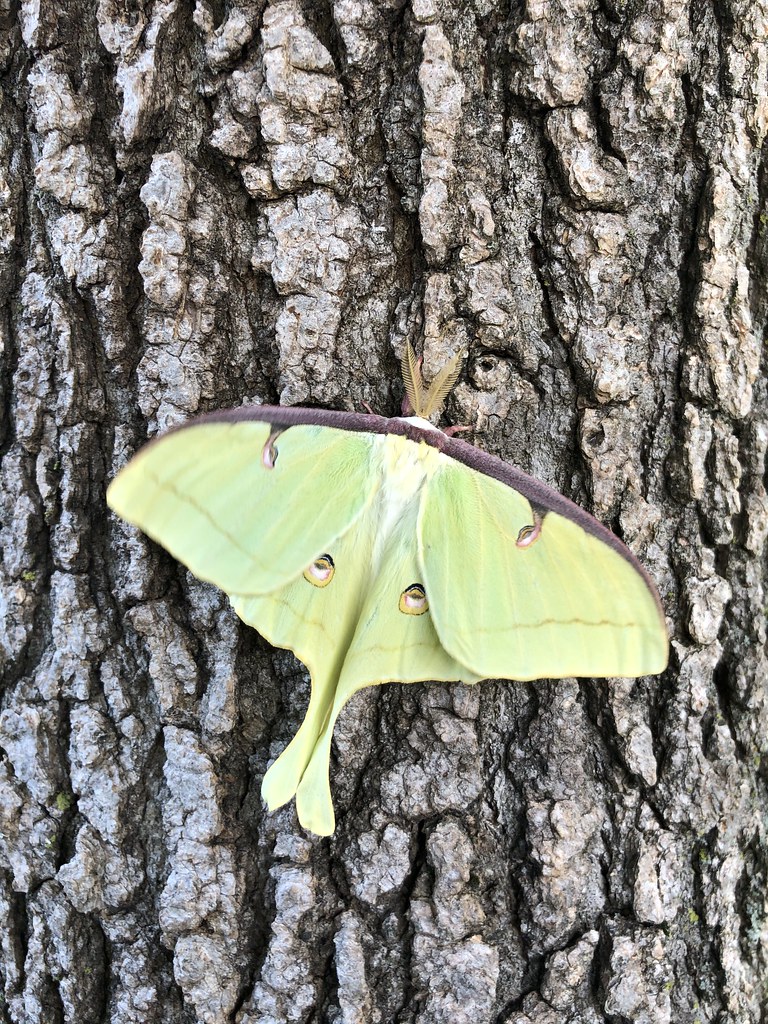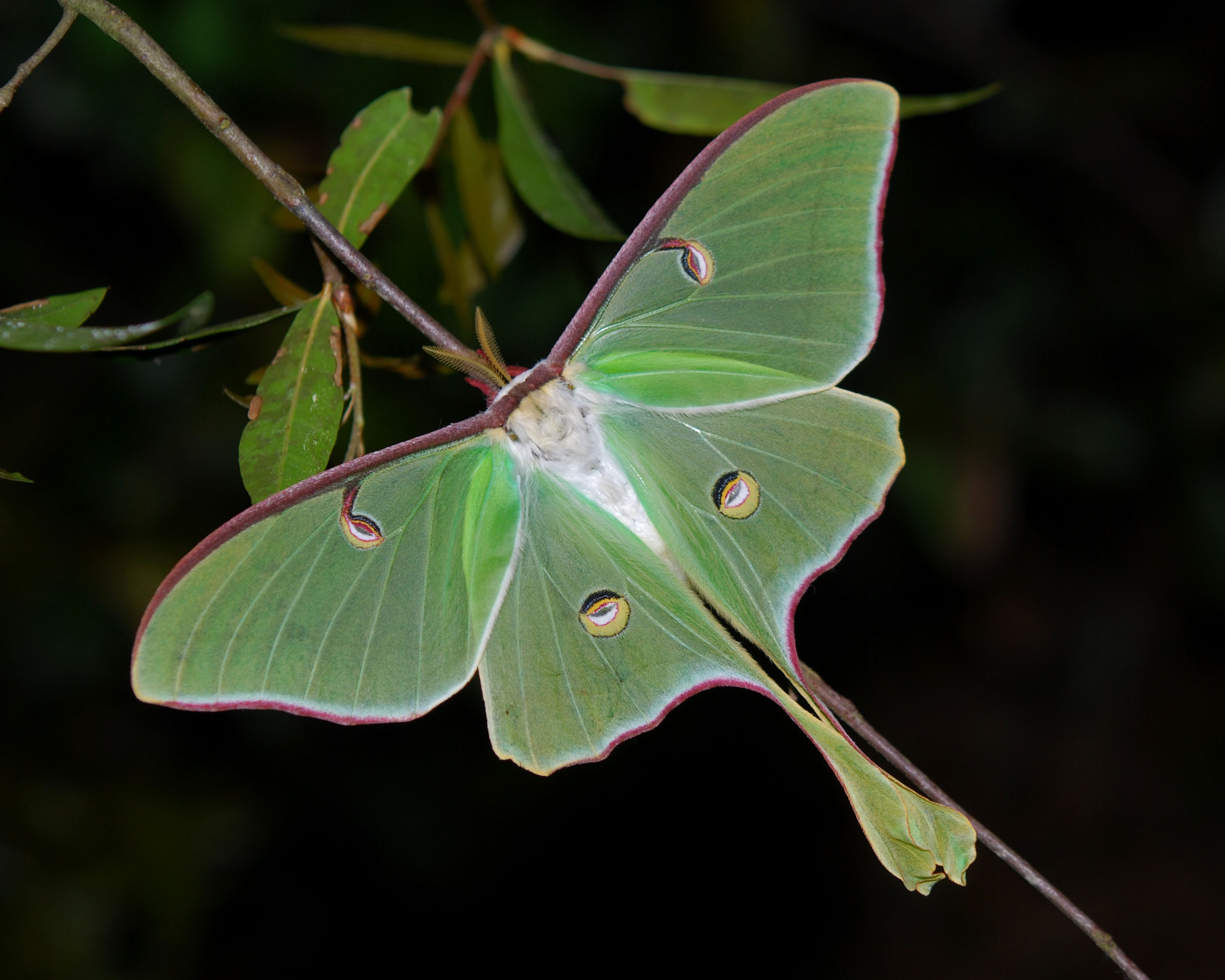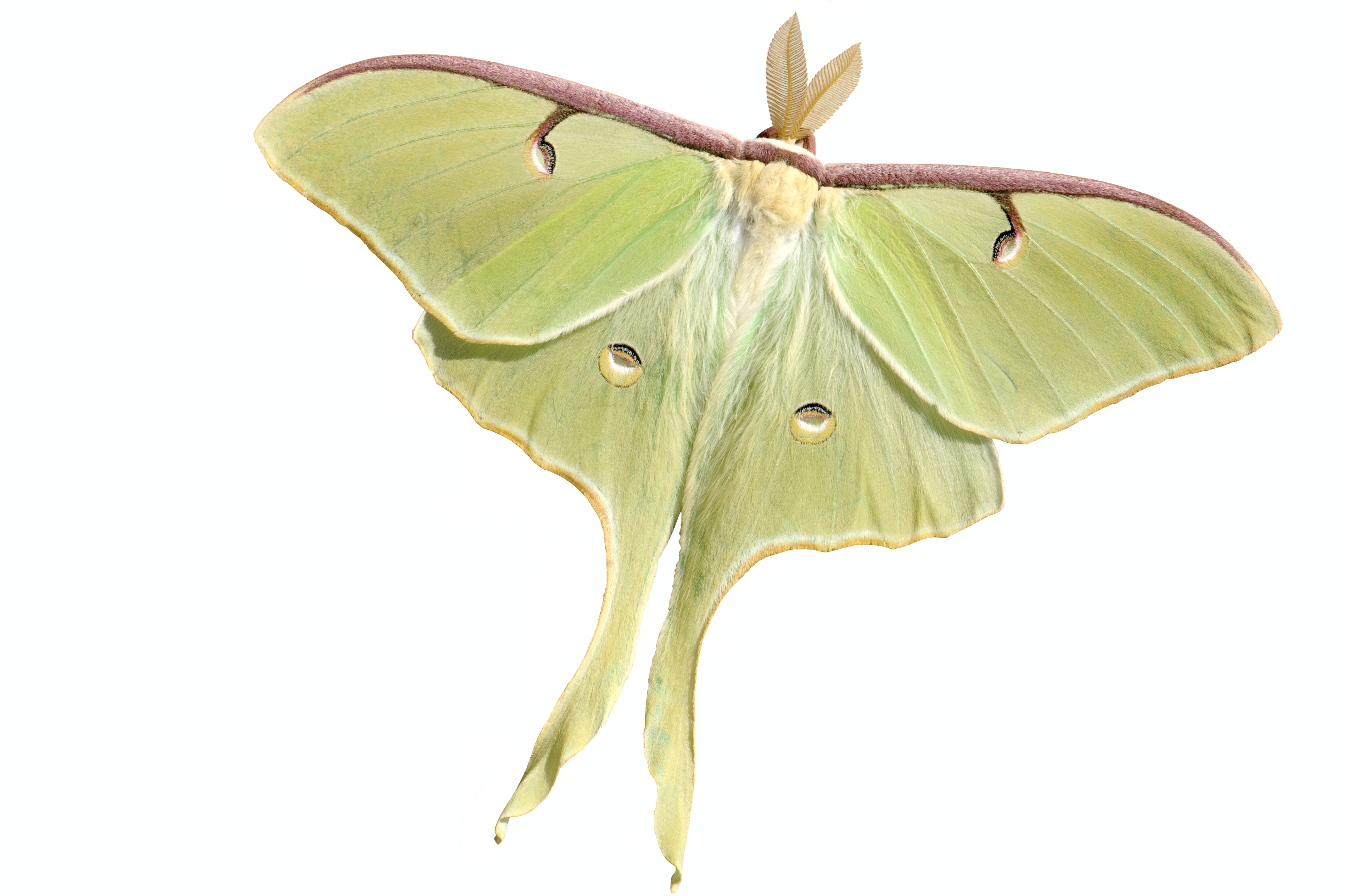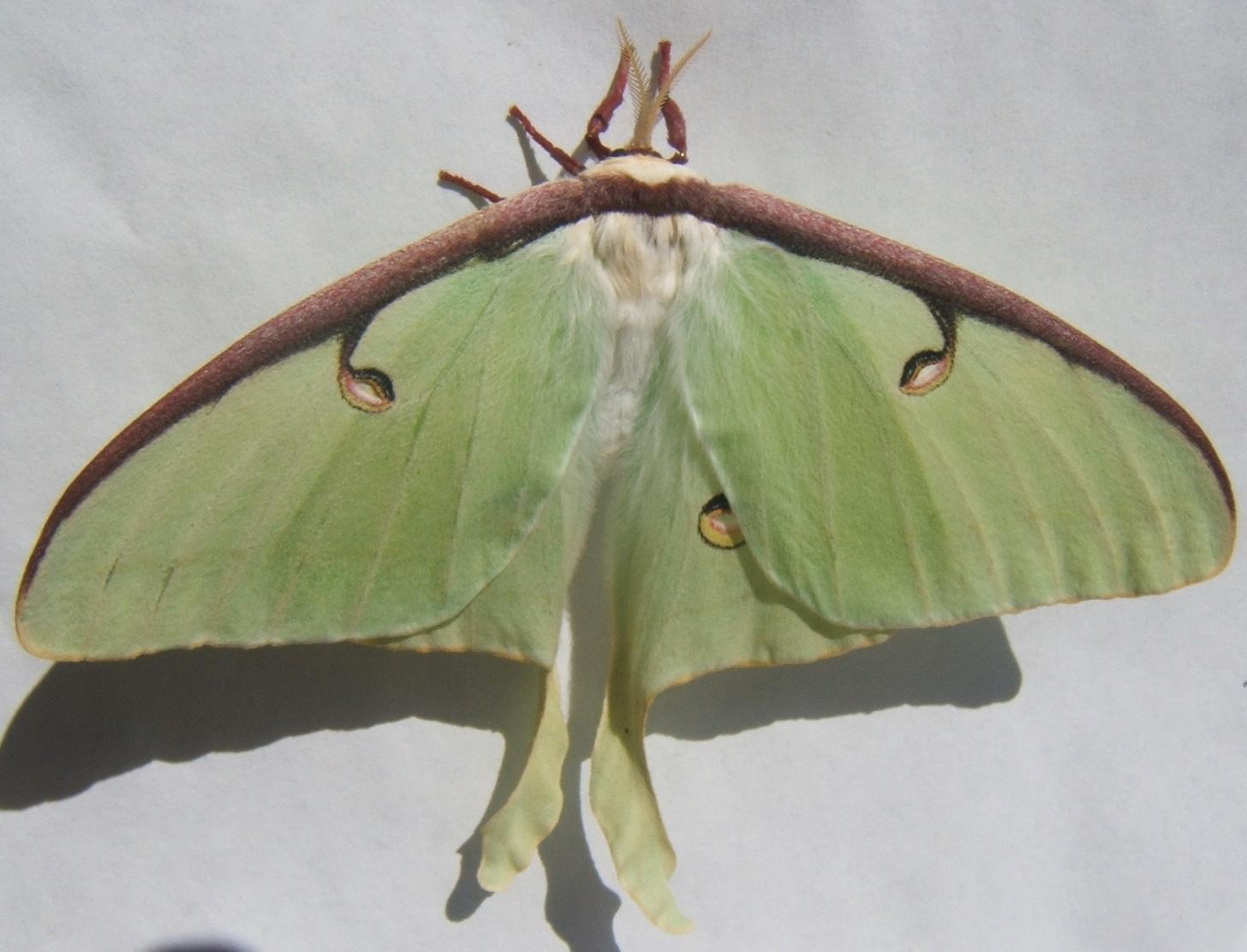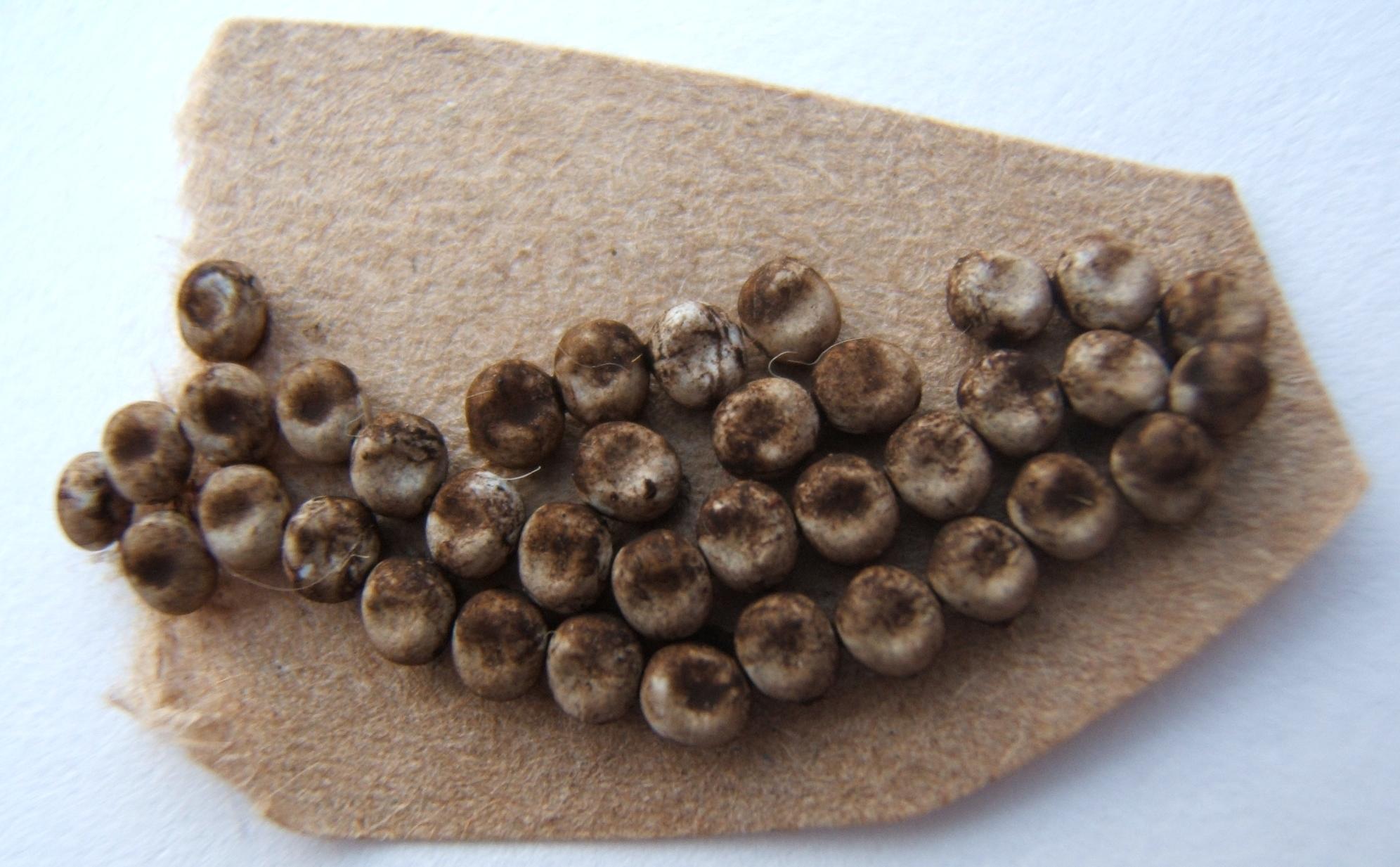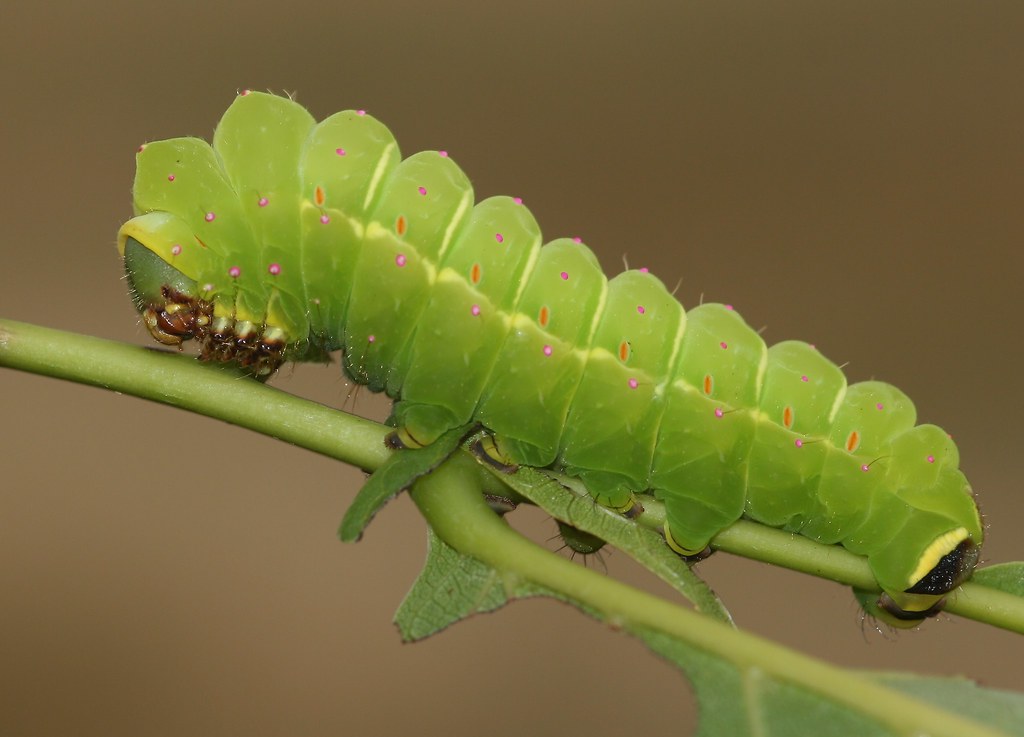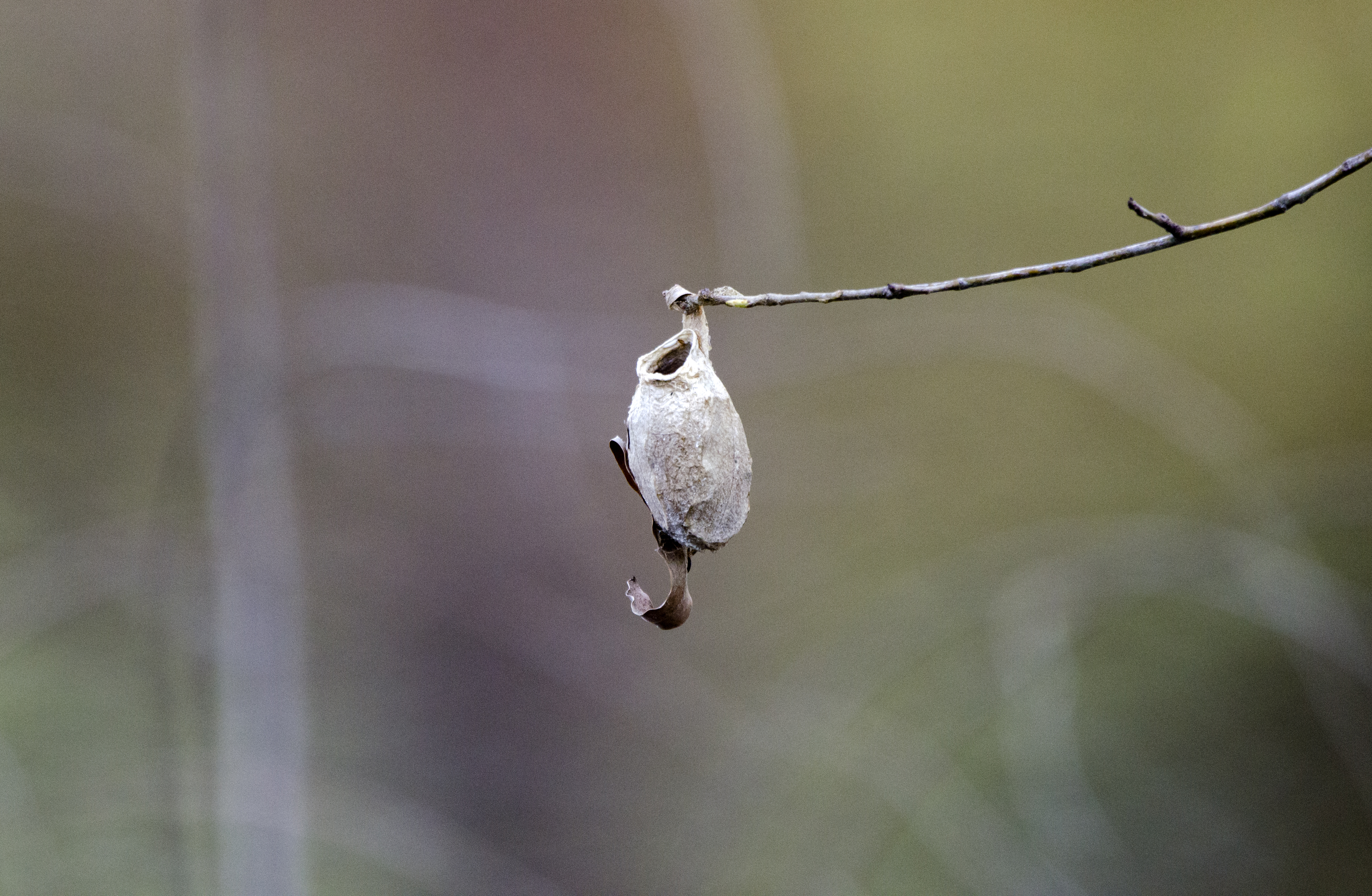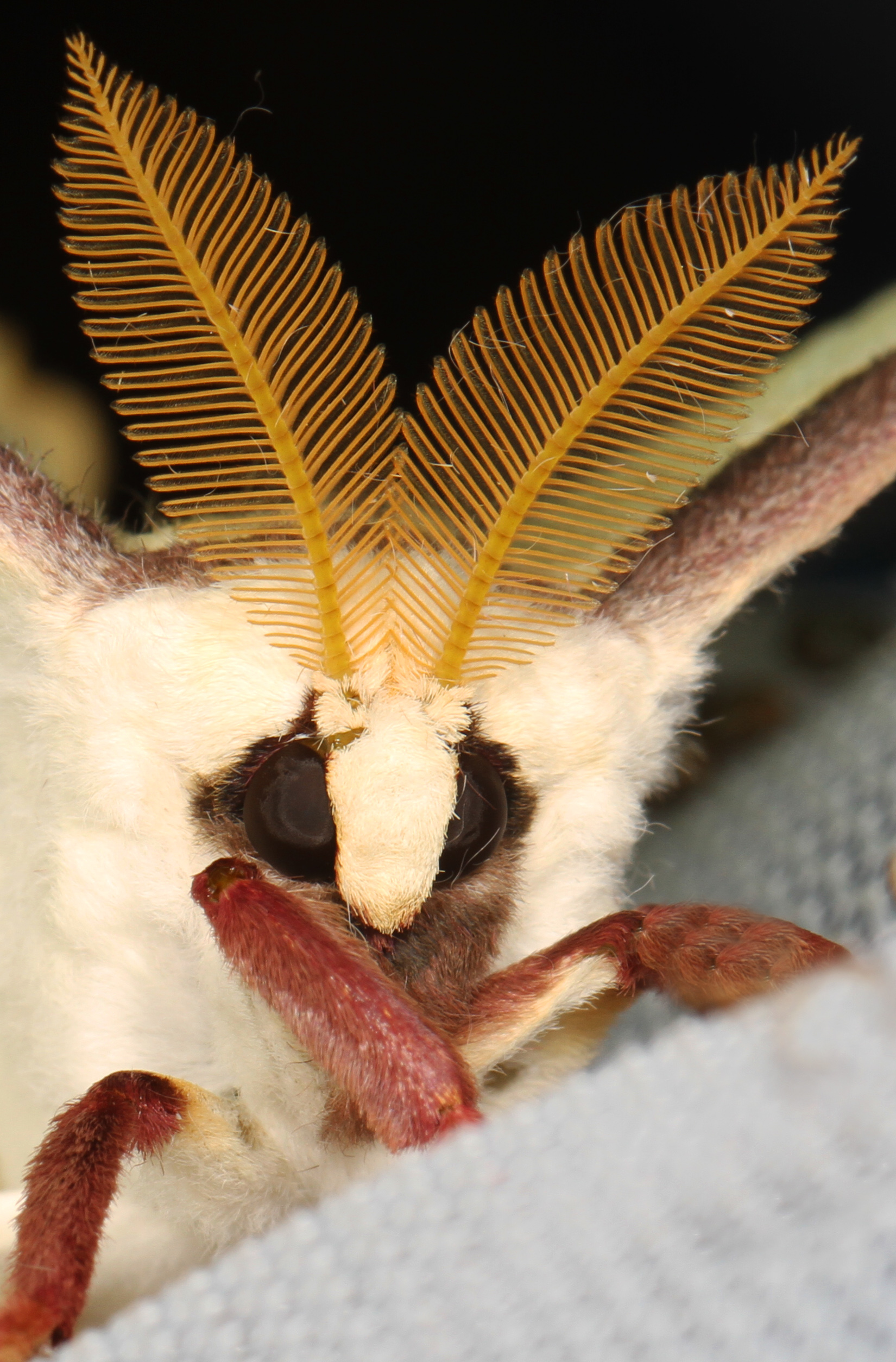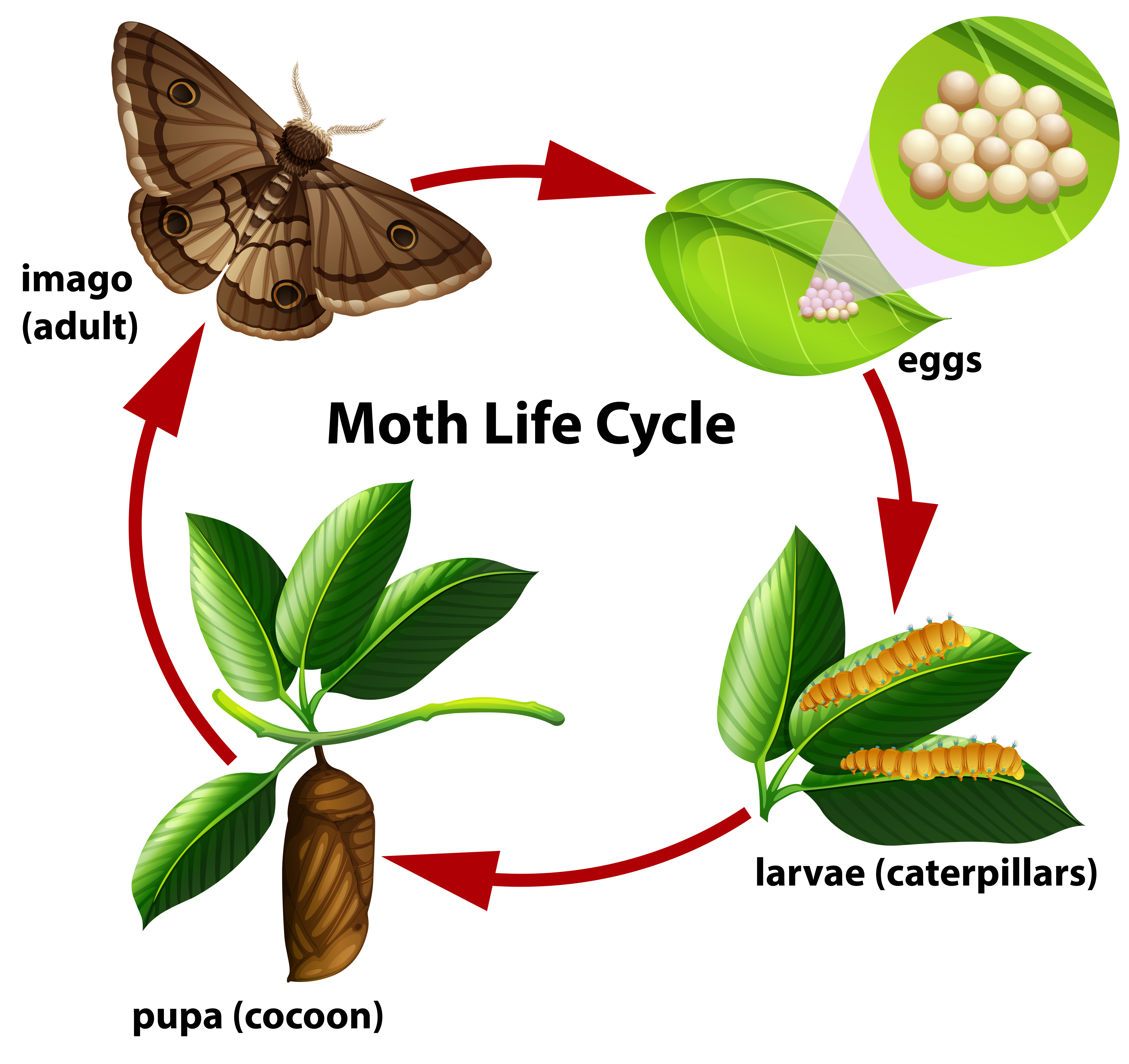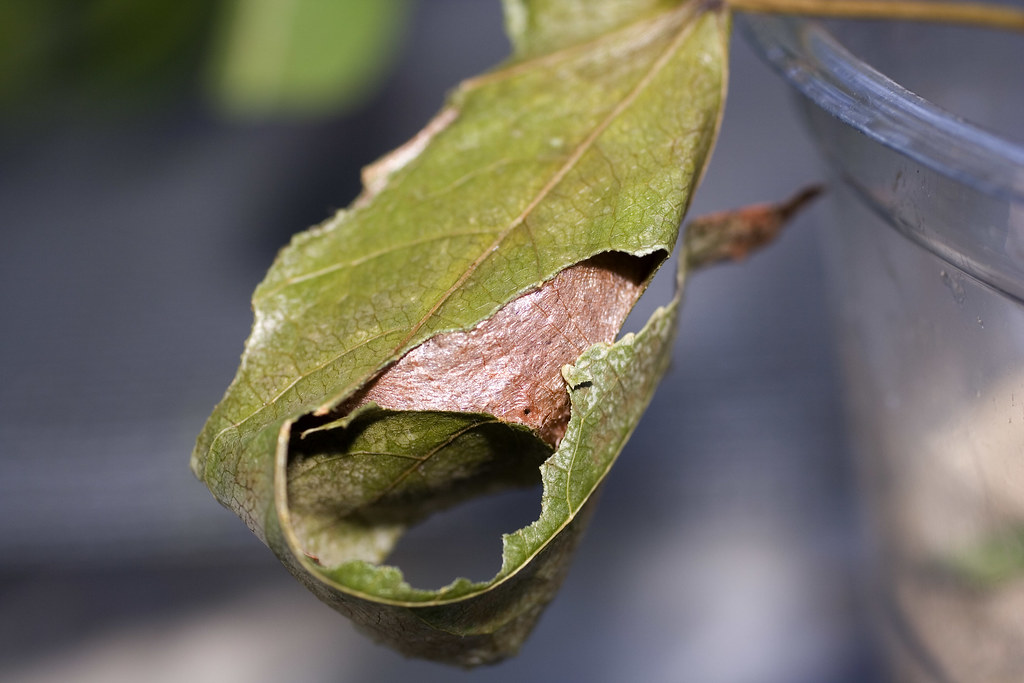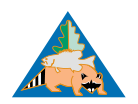Wonders of Wildlife: Luna Moth
Luna Moth
Scientific Name: Actias luna
Found in Alabama: Statewide
Diet: Herbivore (eats plants)
Learn more about... |
|
Luna Moth on Tree
flickr - Daniella Brigida
Click image to enlarge it |
| CLASSIFICATION |
| |
|
|
What type of animal am I?
- I am an invertebrate (an animal without a spine or backbone).
- I am cold-blooded, so I canot control my body temperature.
- I have a stiff covering on the outside of my body called an exoskeleton.
- I breathe through small holes in my abdomen called spiracles.
- I have six legs.
- I have wings.
|
Scientists use basic traits to group animals into different taxonomic classes.
For a taxonomic classification chart comparing key traits of common backyard wildlife,
CLICK HERE! |
|
| The Luna Moth is an INSECT! |
| IDENTIFICATION TIPS |
| ADULT MOTH |
|
Adult Luna Moth
Wikimedia - ggallice (Geoff Gallice)
Click image to enlarge it
|
- Wingspan ranges from 3 - 4.5 inches
- Long, curving tails on the hindwings
- Wings are pale green ranging from yellowish green to blueish green
- Each wing has a transparent moon-like spot called an eyespot
- Outer margins of the wing are either pink or yellow depending on time of year and geographic location
|
| |
|
| MALE |
FEMALE |
- Tend to be slightly smaller than females
- Appear more yellowish green in color
- Antennae are more strongly feathered
|
- Tend to be slightly larger than males
- Appear more blueish green in color
- Antennae are more thin and fuzzy in appearance rather than feathered
|
Luna Moth Male
Dreamstime
Click image to enlarge it |
Luna Moth Female
Wikimedia - Shawn Hanrahan
Click image to enlarge it
|
| |
|
|
EGGS
- About the size of a pinhead
- Slightly oval in shape
- White in color coated in a brown sticky substance
|
CATERPILLAR (LARVAE)
- Up to 2.75 inches in length
- Bright green in color with a yellow line down each side and reddish orange spots
- Thinly covered in short white hairs
|
COCOON
- Use silk and leaves to construct cocoon
- Single layer that appears papery brown
|
|
|
|
|
Luna Moth Eggs
Wikimedia - Shawn Hanrahan |
Luna Moth Caterpillar
flickr - Dean Morley |
Luna Moth Cocoon
Dreamstime |
| Click images to enlarge them |
| ADAPTATIONS |
| |
| PHYSICAL ADAPTATIONS |
| |
| Luna Moths avoid predators: |
- As a caterpillar, the bright green coloration allows them to blend in with the surrounding vegetation (plants).
- The coloration and markings on an adult luna moth's wings help it avoid predators (animals that eat them) by providing camouflage (blending in with the surrounding environment), allowing it to blend in with tree bark or leaf litter.
- The eyespots on the wings also play a role in confusing predators by drawing attention to the wings that appear face-like.
- If a predator attacks the eyespots, the wings may become damaged, but the moth can survive.
|
| |
Male Luna Moth Antennae
Wikimedia - Judy Gallagher
Click image to enlarge it
|
| Luna Moths communicate using scent: |
- Female luna moths release a pheromone (chemical scent).
- Males are able to recognize this scent using their feather-like antennae.
- These feather-like antennae are so sensitive that males can detect a female from a mile away.
|
| |
| BEHAVIORAL ADAPTATIONS |
| |
| Luna Moths are nocturnal: |
- They are active during the night (nocturnal).
|
| |
|
| Luna Moth caterpillars warn predators: |
|
- Luna moth caterpillars raise the front part of their bodies when a threat is nearby which makes them appear less like a caterpillar.
- They also produce a clicking sound with their mouthparts as a warning that they are about to produce a fluid that is distasteful to a predator (animals that eat them).
|
| |
|
| Luna Moths avoid bats: |
|
- Bats are one of the main predators (animals that eat them) of adult luna moths.
- Bats rely on echolocation (process in which they send out a series of high pitched sounds that bounce back to the bat with information about the location of their prey).
- Adult luna moths spin the tails of their wings which disrupts a bat's ability to use echolocation and disorients the bat, allowing the moth a chance to escape.
|
| |
|
| LIFE CYCLE |
| |
Luna Moth Life Cycle
Dreamstime
Click on image to enlarge it |
|
Metamorphosis is the process of physical change that some animals go through as they transform from a larvae into an adult. |
|
| Four life cycle stages of the Luna Moth |
| |
|
|
1. Egg: |
- Females lay between 200 and 400 hard-shelled eggs on leaves of their host plant (hickory, walnut, sweet gum, persimmon, or birch trees).
- Eggs are deposited one at a time or in small groups.
- A tiny caterpillar (larvae) hatches from its egg around 7 days later.
|
| |
|
|
2. Larvae: |
- The baby caterpillar spends 3 - 4 weeks eating its host plant and growing.
- When it becomes too large for its skin, it molts (sheds its skin).
- The intervals between molts are called instars.
Luna Moth Instars
Dreamstime
Click on image to enlarge it
|
| |
|
|
3. Pupa: |
- The caterpillar pupates (transistions from larva to pupa) in a head-up position.
- It spends about 3 - 4 weeks spinning a cocoon (a covering that protects the pupa form of the insect as it changes into an adult) out of silk and leaves.
|
Luna Moth Cocoon
flickr - wanderingnome
Click image to enlarge it
|
| |
- They will attach underneath the host plant and will eventually fall to the ground where it will be camouflaged (blend in with the surrounding environment) within leaf litter and protected from winter weather conditions.
- Inside the cocoon, the caterpillar undergoes metamorphosis (physical change from larva to adult).
|
| |
|
|
4. Adult: |
- The adult moth emerges from the cocoon in the morning, and then waits to allow its wings to inflate and dry before it flies away in the evening.
|
| |
|
|
Life Span: |
- Average life span for an adult luna moth is 1 week.
- Females die after depositing their eggs.
|
| |
|
|
NATURAL
Habitat Needs |
ADULTS |
YOUNG |
| Food |
- Adults do not have mouthparts or digestive organs and do not feed.
|
- Young feed exclusively on host plants including hickory, walnut, sweet gum, persimmon, sumac, and birch trees.
|
| Water |
- Necessary hydration is obtained through leaves of host plant.
|
| Shelter |
- They are often found in forested areas, especially those with deciduous trees.
|
- Eggs are despoited on the top or bottom of the host plant’s leaf.
- Caterpillars are relatively inactive and remain on plant until they are ready to undergo metamorphosis (physical change from larva to adult), at which point they construct a cocoon that will fall to the ground underneath the host plant.
|
| Places to Raise Young |
- Females lay eggs on leaves of the host plant (hickory, walnut, sweet gum, persimmon, or birch trees).
- Adults do not raise the young, but the plant provides a food source for the caterpillars as soon as they hatch.
|
|
BACKYARD
Habitat Needs |
ADULTS |
YOUNG |
| Food |
- Adults do not have mouthparts or digestive organs and do not feed.
|
- Plant host plants including hickory, walnut, sweet gum, persimmon, sumac, and birch trees.
|
| Water |
| Shelter |
- Plant deciduous trees including the specific host plants.
- Do not remove leaf litter in the fall.
|
| Places to Raise Young |
- Plant host plants including hickory, walnut, sweet gum, persimmon, sumac, and birch trees.
|
|
| ECOLOGICAL ROLE |
| |
|
| Animals play an important ecological role in the health of habitats and ecosystems. |
| |
|
Food Source: |
- Larvae (caterpillars) and adults provide a food source for a variety of predators (animals that eat them) including owls, bats, hornets, and ground beetles.
|
| |
|
| Indicator Species: |
- Because the luna moth is so charismatic and recognizable, it is noticeable when their presence is less than normal.
- Moths are sensitive to changes in the environment and can increase or decrease in population size depending on the quality of the environment around them.
- The change in numbers of luna moths could indicate the health of an ecosystem.
- A decrease in the number of luna moths might indicate that other insect populations may be in decline as well.
|
INFORMATION SOURCES FOR THIS SPECIES
.

 Wildlife Tag
Wildlife Tag
